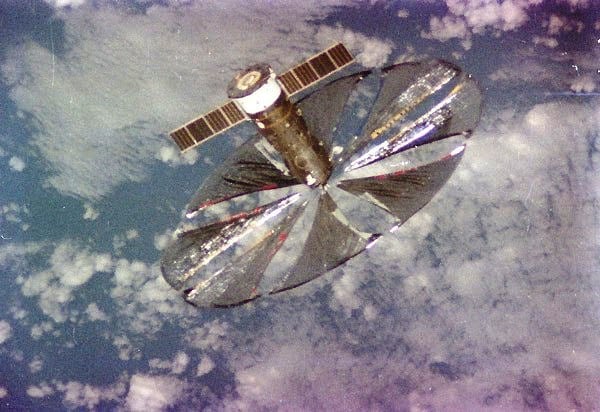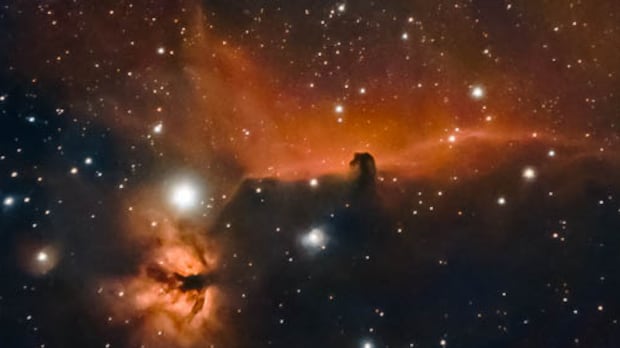Imagine: you worked a long shift, turned off the lights and went to bed, when suddenly the sky outside your window lit up, as if it were daylight.
Here's what could happen if the American company gets its way.
Reflect orbital plans to send giant mirrors into space to “selling sunlight after dark”
This is the plan that causing alarm among astronomers who are already concerned about the loss of the night sky due to satellite constellations—hundreds or thousands of satellites owned by a single company, most often providing Internet services—and general light pollution.
But the California startup says its plan could help solve energy problems, as well as provide lighting for situations such as disaster relief plans and more.
Astronomers don't believe this.
Aaron Boley, an astronomer and assistant professor at the University of British Columbia, said the company's website contains “fundamental misunderstandings or deliberate misrepresentations.”
“They were talking about reducing light pollution with this giant light from space. And it really seems like they're trying to suggest that since it's natural sunlight, it doesn't look like pollution“
Company – which submitted a request In collaboration with the US, the Federal Communications Commission to launch its first satellite, EARENDIL-1, proposes using satellites to direct reflected sunlight to specific locations, such as solar farms, after sunset.
Reflect Orbital has offered several satellites in different sizes: from 10 x 10 meters, 18 x 18 meters and even 54 x 54 meters.
But even at its maximum size, some experts say thousands of satellites would be needed to provide enough sunlight to a solar farm.
“If you wanted to make a midday sun, for example, you would need a mirror that, from the ground, looked the same size as the sun itself in the sky,” said Michael Brown, associate professor of astronomy at Monash University in Melbourne, Australia.
“That's many kilometers across when it's in orbit. Now, no one is going to launch a mirror that's many kilometers in diameter, so they launch several smaller mirrors. And Reflect Orbital is talking about mirrors that are 54 square meters in area. And to produce just 20 percent of the midday sun, it looks like you need about 3,000, maybe more, of those mirrors.”
Reflect Orbital did not respond to requests for comment for this story.
Not a new concept
The idea of a space mirror is not new; it was first proposed in 1920s. On February 4, 1993, Russia deployed Znamya 2space mirror with a diameter of 25 metersAs a result, a bright spot with a radius of five kilometers was formed. A few days later it caught fire over Canada.

USA and European Space Agency They also made similar proposals, but so far none of them have been implemented. Some say it's because it's impossible.
So why is it still so attractive?
“With the increase in the number of objects in orbit, there has been a mentality that if you can do something from space, you should do something from space,” Boley said. “And I think that's part of the idea.”
He explained that for the mirrors to work, the satellites must be in a polar orbit, which is like a ring moving from the south pole to the north. This will result in satellites flying over Canada.
“There's another problem with bright light that you just don't want… and because we have a sun-synchronous design, then these satellites will just sweep across Canada like twilight sweeps across Canada,” he said. “And that’s why Canada needs to say it loudly.”
Consequences
Reflect Orbital estimates that the light emitted from its mirrors will extend several kilometers across.
There is concern about how this could affect not only people who don't need the light, but also wildlife.
Fundy-St. The Martins area experiences rare darkness, making it an ideal place for sky watching.
John Barentine, founder of Dark Sky Consulting, said much is unknown about the technical details of Reflect Orbital. However, he added, the information the company has disclosed suggests it will have unintended consequences.
“These objects will appear as very bright stars in the sky, moving slowly, when viewed from potentially hundreds of miles or kilometers away from the location on earth where the light appears,” he said.
“This comes at a time when the world is dark. Expectation [animal] biology is that it will be dark around them. I'm a little concerned that if you're, say, a migratory bird, which we now know is at some level oriented by the stars, it can be very disorienting.”
In addition, this has implications for observatories, both professional and amateur.
“Reflect Orbital says we're definitely not going to light up your observatories, but if I have bright star-like objects moving across the sky far from where the beam hits the ground, if they're anywhere close to the observatory, it's still a problem,” Barentine said.
Monash University's Brown is also concerned about unintentional radio interference from satellites. It was recently discovered that SpaceX's Starlink satellites creating noise in radio observatories.
But there is something else that worries him.
“I’m also more concerned, oddly enough, I would say, almost from an aesthetic point of view. I like that the sky is kind of a shared wilderness,” he said.
“If you go somewhere that's nice and dark and you look at the night sky and you're constantly reminded of technology, I think it's a bit of a loss.”









